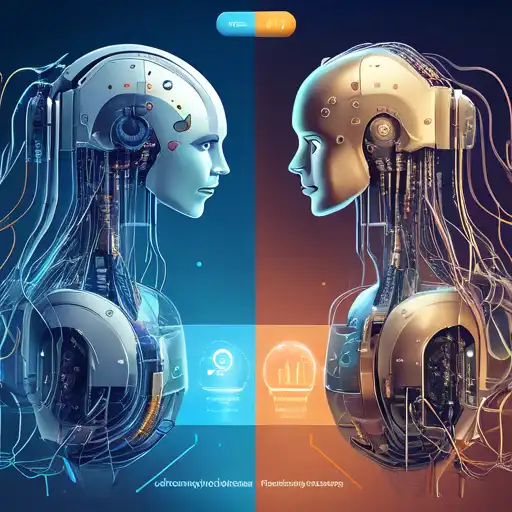Introduction to Machine Learning and Deep Learning
In the rapidly evolving field of artificial intelligence (AI), Machine Learning (ML) and Deep Learning (DL) stand out as two of the most significant and talked-about technologies. While they are often used interchangeably, they are not the same. This article delves into the key differences between ML and DL, helping you understand which technology might be best suited for your needs.
What is Machine Learning?
Machine Learning is a subset of AI that enables systems to learn and improve from experience without being explicitly programmed. It focuses on the development of algorithms that can process data, learn from it, and then make a determination or prediction about something in the world.
What is Deep Learning?
Deep Learning, a subset of ML, mimics the workings of the human brain in processing data for use in detecting objects, recognizing speech, translating languages, and making decisions. DL algorithms are inspired by the structure and function of the brain called artificial neural networks.
Key Differences Between Machine Learning and Deep Learning
1. Data Dependency
DL requires large amounts of data to understand and perform tasks accurately, whereas ML can work with smaller datasets.
2. Hardware Requirements
DL models are complex and require powerful hardware like GPUs for processing, unlike ML models that can run on less powerful systems.
3. Feature Engineering
In ML, feature extraction is done manually by experts, but in DL, the model tries to learn these features automatically from the data.
4. Processing Time
DL models take longer to train due to the complexity of the algorithms and the volume of data, while ML models are relatively faster.
5. Interpretability
ML models are easier to interpret and understand, making them preferable in industries where explainability is crucial. DL models, on the other hand, are often seen as black boxes.
Choosing Between Machine Learning and Deep Learning
Deciding whether to use ML or DL depends on several factors, including the size of your dataset, the complexity of the problem, and the computational resources at your disposal. For simpler problems with limited data, ML might be the way to go. However, for complex problems that involve large datasets, DL could offer better accuracy and performance.
Conclusion
Understanding the differences between Machine Learning and Deep Learning is crucial for anyone looking to leverage AI technologies. While ML offers simplicity and ease of interpretation, DL provides unparalleled accuracy for complex tasks. By considering your specific needs and resources, you can choose the most appropriate technology for your project.
For more insights into AI technologies, check out our articles on Artificial Intelligence and Data Science.
